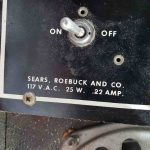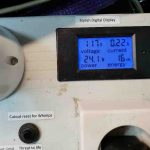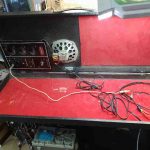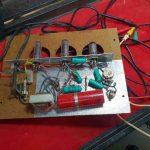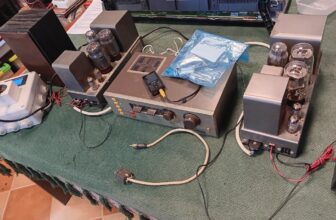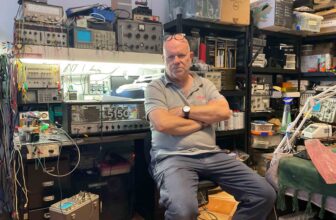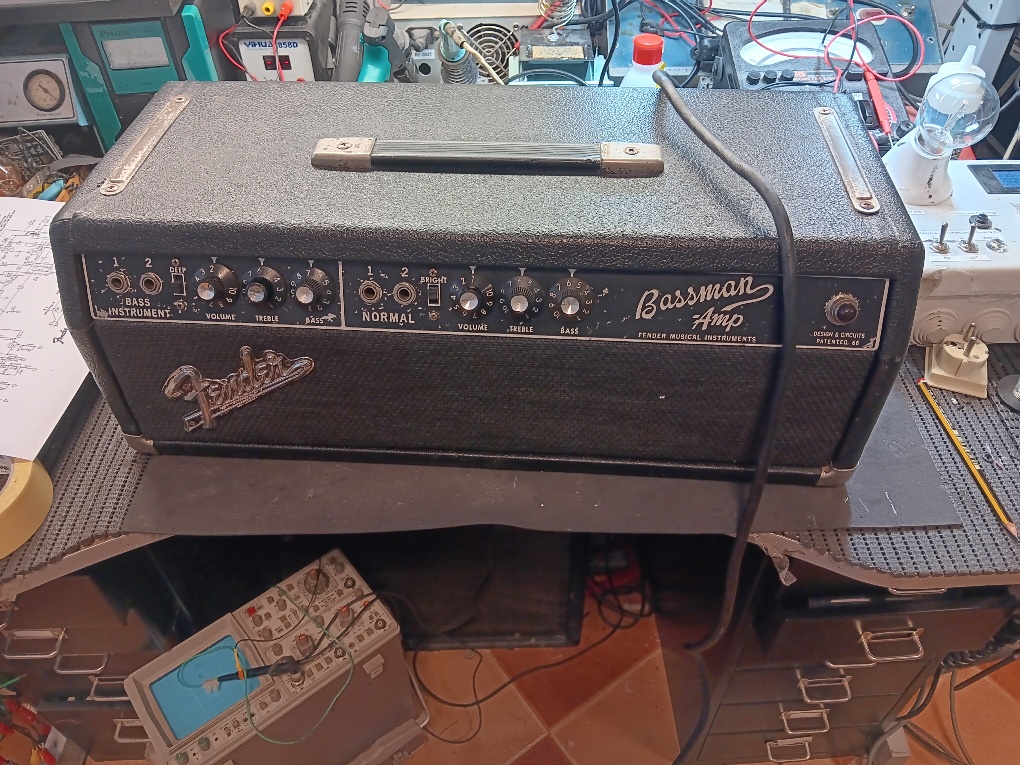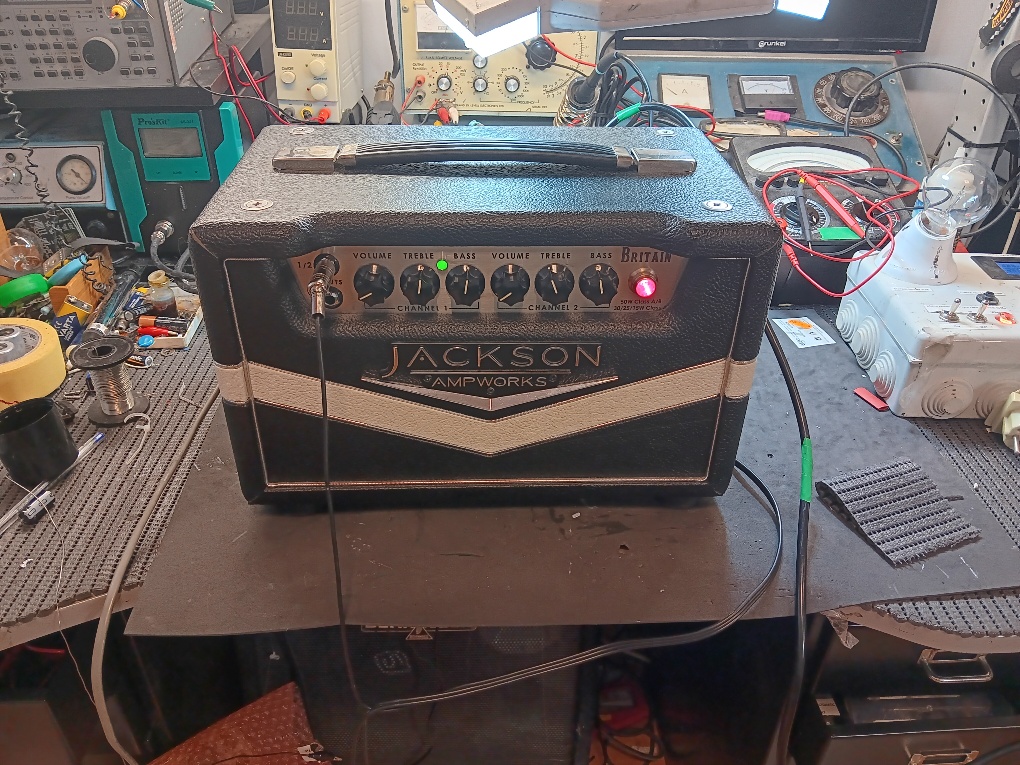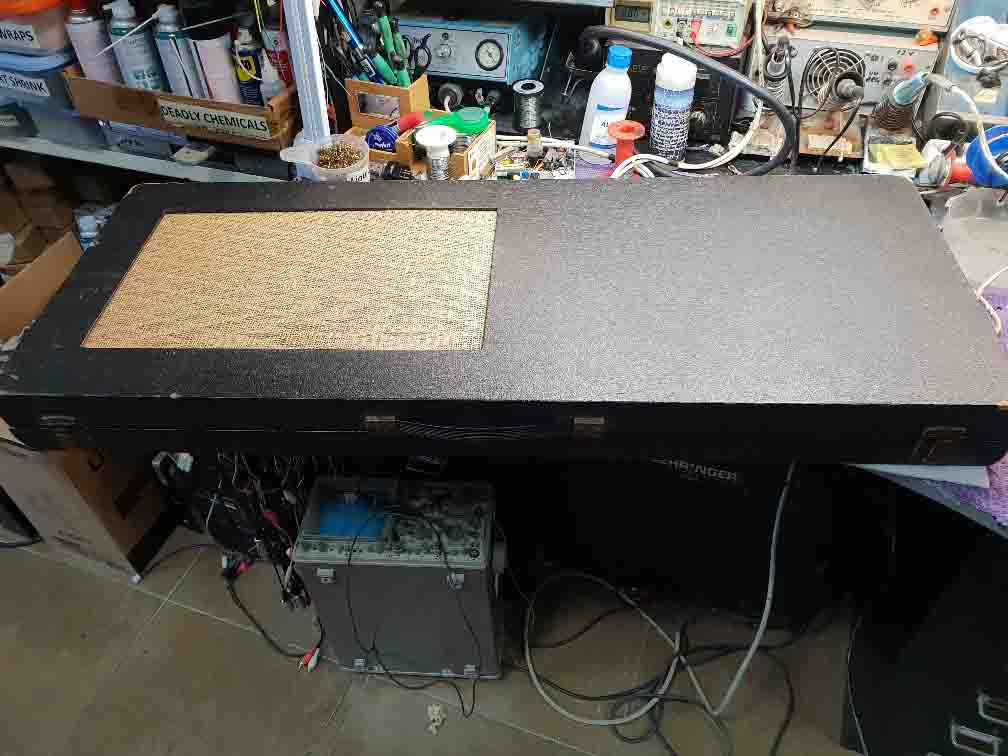
Sometimes, things come into the workshop that make you smile and make you happy for a little while. This was one such thing.
A customer came into the shop carrying what looked like a guitar case. Indeed it was. He asked if I could have a look at it, thinking that I would be looking at a dodgy guitar pickup or whatever. On the bench, I opened the case to find a small speaker and a small flat valve amplifier. A carry case with an amplifier built in! I have never seen one before. It was a Silvertone 1448, made in the USA. My first panic was the fact that it was 117VAC and here in Spain, the out-of-socket angry pixies come flooding at the rate of 220v. Please say nobody has plugged it in…
Checked it over and the 3 valves all had heater continuity. So, with current limiting and low volts, powered it up and let it sit for 20 minutes. With an input jack, we had had a good volume via a signal generator! Gave it full beans at mains voltage and had a look at the output on a scope. No distortion, no hum. This thing had sat for years and all the capacitors read as good as they did coming out the factory. I was all ready to change bits, but the Sangamo capacitors were fine after their 60 year sleep. The mains filter reservoir capdensors had enough to keep the thing going 10 minutes after the mains was disconnected. Clean up the valve bases, volume pot and this little amp performed amazingly. Something so nice about opening your guitar case and standing it up with the lid facing the audience. Away you go.
The circuit is quite cleaver. It uses a 50C5 as an output pentode, rated at a couple of Watts. But, I tell you now, its sounds like a stack of Marshalls. The heaters for this valve and the rectifier are wired in series with the primary of a small transformer, supplying the heater voltage to a 12AU6 pre amp valve which is isolated. Be a bit careful as the chassis can be at mains potential, albeit via a 68K resistor and capacitor. At 117 volts, the earth leakage won’t kill you, but best use an isolation transformer ah?
Looking at the identification plate in the case, it shows the power consumption and Wattage. It tied up 100% with what was happening in real life!
This silly little thing sounded HiFi.



